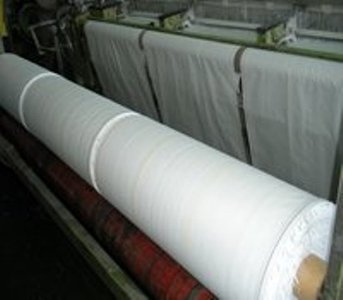FW
Four of the nine clusters in Malegaon region of Maharashtra have received in-principle approval from the central government and two of these are set to begin operations soon. The first project to start operations is the textile cluster at Malegaon. The project was approved on August 28, 2012.
The nine clusters are being developed through the central government’s Micro and Small Enterprises-Cluster Development Program that sanctions projects that cost Rs 15 crores. Apart from these, the state government's scheme considers projects that cost Rs 5 crores. The fiber-to-fabric cluster at Nandurbar that was approved on February 24, 2014, is at a nascent stage.
The zardozi cluster at Yeola has been approved recently. Diagnostic survey report has been approved for an agricultural implements cluster at Yeola, a bamboo cluster at Surgana and a multi-food cluster at Harsul. The paithani cluster at Yeola is awaiting approval.
The government gives Rs 25 lakh for soft intervention, preparation of launching of website, export promotion and training programs.

A recent report by International Textile Manufacturers Federation (ITMF) says global yarn production decreased in the third quarter of 2014 compared to the previous quarter due to lower output in Asia and Europe. Also global fabric production declined in Q3/2014 compared to the previous quarter with all regions showing declines. However, on an annual basis world fabric production improved.
Estimates for yarn production for the fourth quarter are positive in Asia and Europe, while in North and South America they are negative. Estimates for fabric production are positive in Asia and Europe; however, in South America they are negative. The outlook for yarn production for the first quarter of 2015 is positive in Europe and unchanged in Asia. The same pattern applies to the outlook for fabric production. It is positive in Europe and unchanged in Asia.
Global yarn and fabric scenario in Q3-2014 During the same period, the yarn production in
North America increased moderately, while in South America it recorded a strong rise. On an annual basis, the global yarn production rose and was supported by a strong increase in Asia. In Europe, North and South America, in contrast, yarn output fell year-on-year. Worldwide yarn stocks rose in comparison to the second quarter. Thereby, yarn stocks in Asia and South America were increased, while they were reduced in Europe. Year-on-year, global yarn stocks increased due to higher inventories in Asia, while stocks in Europe and South America were reduced. Yarn orders in Brazil showed a strong quarter-on-quarter growth and a moderate rise in Europe. Also, year-on-year Brazilian orders rose, while Europe saw a modest decline.
Fabric output in Asia and Europe increased, while it fell in South America. World fabric stocks increased quarter-on-quarter with all regions supporting this development. Year-on-year, the picture was mixed with increases in Asia and North America and decreases in Europe and South America. Overall, global fabric inventories fell annually. Fabric orders fell in Europe and rose in Brazil quarter-on-quarter as well as year-on-year. Percentagewise world-view of yarns and fabrics
In the third quarter, global yarn production fell by 1.3 percent quarter-on-quarter, thereby, output in Asia and Europe decreased by 1.4 percent and 5.7 percent respectively. In North and South America yarn output climbed by 1.1 percent and 5.7 percent compared to the second quarter of 2014. In comparison to the third quarter of 2013 worldwide yarn production witnessed a rise of 6.3 percent. This was supported by an increase of 7.3 percent in output in Asia, whereas the other regions saw declines of 3.1 percent annually in Europe, 2.4 percent in North America and 12.3 percent in South America.
Global yarn inventories rose by 0.9 percent quarter-on-quarter. Thereby, Asian inventories remained nearly unchanged, while they decreased by 3.6 percent in Europe. Yarn stocks in South America increased by 7.8 percent. On an annual basis, global yarn inventories rose by 3.7 percent due to a strong 5.5 percent increase in Asia. In Europe and South America yarn stocks were reduced by 2.1 percent and 11.2 percent respectively.
Global fabric production fell by 1.3 percent compared to the previous quarter. The strongest decline was recorded in South America with 8.3 percent followed by Europe with 7.6 percent. In Asia fabric output fell moderately by 0.4 percent. In contrast, global fabric output increased by 1.3 percent year-on-year supported by 2 per cent rises in Asia and 2.9 percent in Europe. In South America, however, fabric production fell by 11.4 percent annually.
Worldwide fabric stocks increased by 1.4 percent compared to the previous quarter with all regions contributing positively. Stocks in Europe rose the strongest by 4.8 percent, followed by gains of 4 percent in South America, 0.4 percent in North America and 0.2 percent in Asia. In contrast, global fabric inventories were reduced by 1.9 percent year-on-year. While fabric stocks were raised by 0.8 percent in Asia and 1.8 percent in North America, they fell by 0.7 percent and 9.8 percent in Europe and in South America respectively.
Yarn orders in Brazil were up by 5.7 percent quarter-on-quarter and by 0.5 percent Europe. On an annual basis yarn orders increased in Brazil by 12.5 percent and fell in Europe by 0.3 percent. Fabric orders rose by 5.7 percent in Brazil compared to the previous quarter, while they fell by 3.4 percent in Europe. Year-on-year, Brazilian fabric orders climbed by 12 percent whereas in Europe they declined by 3.6 percent.
Lack of concerted efforts in using many of the government schemes seems to have affected the growth of Tirupur knitwear cluster. This was revealed in a CII study of the Tirupur district council, and Srupuram Trust among others, with the help of Grant Thornton, the sixth largest consultancy/accounting network firm in world, to understand the strengths/weakness of the Tirupur cluster. The report said 15 government schemes formulated to trigger growth of industrial clusters like Tirupur were either not fully used, or used only once, which too not in recent years.
Director (government and business advisory department) of Grant Thornton for South India, V Padmanand, says schemes like micro, small enterprises cluster development program, scheme for workers hostel, processing development scheme, technology business incubation, and market access initiative scheme were not used at all. Many in the knitwear cluster were not even aware of some of the schemes. The report further suggests the need for disincentivising export of cotton, and the requirement of a free-trade agreement with Russia and Brazil, and the European Union.
The feeling is that an FTA with EU is essential since competitors like China, Cambodia, Sri Lanka, and Bangladesh are getting preferential market access to EU making their products cheaper than Indian apparels. Many say that an export duty should be imposed on cotton to discourage its export. As Padmanand puts it, main competitors of India are benefiting from cotton exports. Vietnam domestically produces only 2 per cent of the cotton needed for its apparel production, while imports the rest from India, and Africa.
Amid the stockpiles and waning demand in textile industry, state-run Cotton Corporation of India (CCI) is set to suffer its steepest loss in six years from sales in the current season. The CCI started selling from its stockpiles last month to make room in its warehouses for the ongoing bumper harvest, but managed to find buyers for less than half of what it auctioned.
The CCI has procured more than 6.5 million bales this season from farmers at prices around 5-6 per cent above current market rates, making the fibre uncompetitive amid world prices that are languishing near more than five-year lows.
As per CCI Chairman and Managing Director, B K Mikshra, the corporation may see a loss of about 20-25 billion rupees ($322-$403 million) under the support price in operation this year as the response to the sale is very sluggish in the absence of Chinese demand. He expected hopes to see some stability in prices by March on the basis of less supply. That would be the biggest loss since at least 2008/09, a government official said. However, this loss will not show up on CCI's books as it will be reimbursed by the government.
China used to buy almost 60 per cent of India’s cotton until last year but it has now cut imports to support its farmers. This will bring down India’s exports to 6-8 million bales this crop year, he said. India’s domestic cotton demand is expected to rise about 3 per cent to 31.1 million bales this crop year. However, Indian firms are delaying purchases on hopes prices will drop further.
Anticipation is building around the 2015 Spring edition of Intertextile Shanghai Apparel Fabrics. The fair is on track to set a new exhibitor record, coinciding with its relocation to a brand new venue. More than 2,500 exhibitors from 21 countries and regions have confirmed their participation, setting a new high point in the fair’s history.
French suppliers are increasing their presence at Intertextile Shanghai Apparel Fabrics, with a dedicated France zone making its first appearance at the Spring edition after a strong showing last October. Some of the leading names in the industry will participate at the fair, including new exhibitors Malfroy Million and Solstiss Sarl. Malfroy Million is well known for silk scarves and will exhibit premium silk at the fair. Solstiss Sarl will showcase its French lace produced on Leavers machines.
Yarn expo spring will be held alongside. This will showcase a spectrum of natural and blended yarns including cotton, wool, flax or regenerated flax, and man-made fibers and yarns as well as specialty products including elastic and fancy and blended yarns. The Chinese fiber pavilion will feature a bio fiber zone to promote the use of biochemical fibers. Some of the international highlights include the Indian pavilion and the Pakistani zone.
www.intertextilehome.com/
The United States has a high demand for textile products and the market also demands high quality products. Zimbabwe can export its textile products if these meet the United States’ standards. The Zimbabwean textile industry needs to explore the United States market as it bids to recover its former luster.
Trade between Zimbabwe and the US has declined in recent years, with exports to America totaling $34 million in 2013 compared to $91 million in 2001. The country imported $60 million worth of goods from the US in the comparative period, up $from 31 million. Zimbabwe imports mainly machinery, pharmaceutical products, vehicles and medical instruments and exports iron and steel, tobacco, coffee, raw hides and skins.
AGOA is the main vehicle for dialogue between the US and sub-Sahara Africa, but its lifespan ends this year. Notably, Zimbabwe is not eligible under the African Growth and Opportunity Act (AGOA), which offers qualifying sub-Saharan countries even more liberal access to the US market after Washington imposed sanctions on President Robert Mugabe and his inner circle in 2003 on allegations of human rights abuses.
Polyester manufacturer Indo Rama Synthetics reported a standalone net loss of Rs 58.40 crores for the December quarter on account of inventory losses due to falling crude oil prices. The company had posted a standalone net profit of Rs 97.38 crores, same quarter, a year ago. However, net sales during the October-December quarter, increased 11.46 per cent to Rs 648.80 crores against Rs 582.07 crores a year ago, Indo Rama said in a statement.
Sales have registered a growth of nearly 20 per cent in volume at 74,000 tons during the quarter under review as against 58,000 tons in the same quarter last fiscal due to market demand and falling prices. With the improving economic conditions, the company expects to perform better in the coming quarters.
Indo Rama Synthetics is one of the India's largest dedicated polyester manufacturers with an annual capacity of around 6.10 lakh tons per annum. The company is listed on the Indonesia Stock Exchange. The company exports to its customers in North America, Europe, South America, Asia, Australia and the Middle East.
www.indorama.com
To counter non-tariff barriers, the Indian government has introduced a program called DISHA (Driving Industry towards sustainable human capital advancement) to address social and environment issues faced by the Indian apparel industry. The Apparel Export Promotion Council (AEPC) has been assigned the task of implementing the program. DISHA is a business-driven initiative for the continuous improvement of working and environmental conditions in global supply chains that could lead to achieving a dual goal of job creation and social protection.
Across globe, time and cost pressure prevents producers from implementing the social compliance code of conduct. In the context of globalization and international competition, many companies source labour intensive goods from developing and newly industrialized countries. However, working conditions in these countries often do not comply with labor standards such as those established by the International Labor Organization (ILO). To address this issue, many companies and associations have created individual codes of conduct and monitoring systems like the DISHA program introduced in India.
Social compliance initiatives aim to establish a common platform for the various American and European companies’ codes of conducts and monitoring systems. It also lays the groundwork for a common monitoring system for social compliance. Popular elements under common code of conduct include legal requirements, no child labour, health and safety, workers’ rights, housing conditions, environment, systems approach, monitoring and enforcement and so on.
Experts feel compliance issues should have been covered under WTO preview long ago with clear guidelines of fines and penalties as in the cases of other products. Furthermore, to the extent feasible; the integration of these programs with other private programs should be explored by governments of the developing countries in order to minimize the requirements to comply with multiple labeling requirements.
www.aepcindia.com

UK and the US demand in contrast
While in the UK, product orders for premium and luxury market (averaging $315 for a pair of women’s jeans dropped by 24 per cent, they increased by 9 per cent in the US where the average pair’s price is $179. However, in the UK, in the mass market (jeans for $57) and value market (jeans for $26), product arrivals were up 29 per cent and 58 per cent. In the US, these markets, with jeans respectively at $69 and $30 on average, decreased by 2 per cent and 8 per cent.
The study further goes on to show that luxury products saw greatest discounts. Only 45 per cent of sales were made at full price, as compared with 65 per cent in the premium market and 61 per cent for those in the mass and value market. The major retailers selling denim included Asos for both countries for the mass market segment, and Nordstrom in the United States and Farfetch'D in the UK for luxury and premium segments. The most stocked brands for men were Levi's, 7 for all mankind and Diesel in the US, and Diesel, Levi's and G-Star in the UK. The most stocked brands for women included 7 for all mankind in the US, followed by J. Brand and Paige Denim, while in the UK, J. Brand, G-Star and 7 for all mankind occupied the top spots.
Editd’s study also reveals that the notion that rise of fitness apparel has had a negative impact on denims is not entirely true. While new arrivals of leggings, jeggings and other sweatpants almost doubled between January 2014 and January 2015, denim arrivals were also 31 percent higher. But while sales of casual pants were up 114 percent, sales of denim posted over 45 percent rise. Over the course of two years, sales curves essentially followed the same trends. editd.com
Sustainability will be one of the main topics at the Kingpins Show in Amsterdam to be held from April 16 to 18, 2015. Kingpins is an international denim sourcing show. This event showcases innovation, sustainability and craftsmanship in the apparel and clothing, textile, fabrics, yarns and fashion accessories industries.
This edition will feature a concept called ‘Transformers’. Transformers are people in the denim supply chain who recognize that they need to invest in new and better ways to produce denim, from making dye stuffs to manufacturing fibers and finishing garments, to make the industry environmentally and financially sound by 2029.
There will be a panel discussion on water use in producing denim. A selection of people involved in the denim supply chain will present their concepts for change in their specific area. The panel will end with conclusions and industry suggestions, all with input from an audience of denim professionals.
A pair of jeans requires huge amounts of water at all stages of the manufacturing process. Transformers are those who offer new technologies and alternative practices to significantly reduce the jean industry’s water usage.
A special ‘Denim Days’ program will be carried out throughout Amsterdam from April 13 to18, with a range of events and activities in and around the most important denim stores in Amsterdam. This will provide an opportunity for denim brands, producers, consumers, press and designers to celebrate all things indigo.
www.amsterdamdenimdays.com/kingpins-show-15-16-april/












